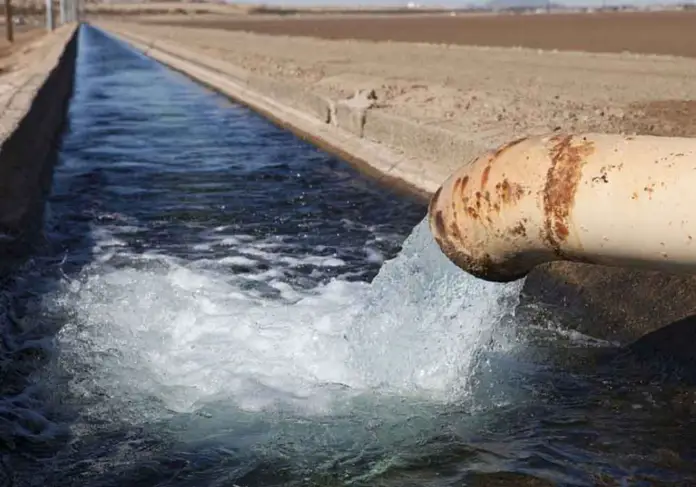Three years from now, Pakistan will become a water-scarce country. To the layman, it may seem an outlandish idea planted by miscreants looking to instil an air of panic in the Pakistani population. But to those who know better, the time to panic is here and now. Most Pakistanis would argue that the country is immune to realities such as a scarcity – or even a shortage- of water, for they believe we have the largest canal system in the world, have been bestowed with five mighty rivers that nourish our lands and have an un-diminishable glacier-laden north referred to as the “water tower of Asia.” And this, in fact, lies at the heart of the problem Pakistan is expecting to become catastrophic in the next few years.
The majority of Pakistani people have no idea, no realization, and subsequently no concern for how crucial water and its preservation is for the economic, food, energy and environmental security of a country and its people. This ignorance, or denial of this impending doom, is in effect a bigger problem than the actual scarcity of water we are destined to face by 2025.
Both are manageable, yet nothing is being done in real terms to address either. The facts speak volumes about the danger we are in.
Pakistan Council of Research in Water Resources (PCRWR) has stated that Pakistan had reached its water stress line in 1990 and crossed the water scarcity line in 2005. It also stated that in 1951, the per capita surface water availability in Pakistan was 5,260 cubic meters per year, which dwindled down to around 1,000 cubic meters in 2016.
The availability is expected to fall to about 860 cubic meters by 2025, pushing Pakistan out of its current list of 36 most water-stressed countries of the world and down into the list of the world’s most water-scarce countries.
Though Pakistan’s unabated population growth has had a major hand to play in this significant decrease in per capita water availability, the way we have abused water has only expedited the problem. Our storage capacities have run the course of their life, rain harvesting is still a Martian ideology and recycling of water is considered a thought for another species.
The possibility of thriving populations running out of water, especially drinkable water, is not an alien, unexplored phenomenon. Erratic weather patterns induced by climate change and a constantly warming planet are making droughts, flash floods and urban flooding all the more common. The misuse and abuse of natural water resources as well as excessive reliance on groundwater has played havoc with natural ecosystems, adversely affected agricultural produce and worsened soil health across the world.
Freshwater is running out across the world and is very much a possibility for Pakistan, too. In 2018, South Africa’s Cape Town faced a water crisis so acute the state declared it a national emergency. The crisis was fuelled by a lengthy drought but catalyzed by unsustainable practices of the city’s residents.
The same is true for Pakistan. Water is not even given a fraction of the value this irreplaceable resource rightfully deserves. Be it at home or in commercial arenas, water wastage is a constant. Take an early morning drive around any locality in any city of Pakistan and you will find water pouring out of driveways.
The quest to keep houses and automobiles spick and span has developed into an insatiable addiction for most households, resulting in the wastage of hundreds of thousands of gallons of water each day. Most of this sheen is enabled by domestic help, who could not care less about water or its wastage. In absence of strict regulation, the agriculture sector is leaning more and more towards the cultivation of rice and sugarcane crops that contribute to increased profits but also result in excessive use of water, a majority of which is groundwater pumped through tube wells.
Per PCRWR, there are close to one million tube wells pumping out 55-million-acre feet of underground water for irrigation. This volume is 20% more than that available from the country’s canal system! The industrial sector is not far behind. There is little or no regulation to check or restrict the flow of contaminated wastewater into canals and rivers across the country. This contaminated water not only reaches cultivated lands for irrigation purposes but also makes its way into supply lines that take water to homes for use by domestic consumers. Per official statistics, not even 1% of the 4.36 billion m3 (BCM) of wastewater generated by Pakistan each year gets treated before disposal.
Until we make amends, Pakistan is bound to push itself into a water crisis it would find hard to swim out of. The government needs to take the lead in refining the 2018 National Water Policy and taking hard-hitting measures to limit the misuse and wastage of water. It must prioritize making the consequences of abusing this precious natural resource known and understood by each and every citizen. It must take the water conservation debate into mainstream media, the curriculum and the official state narrative to drive the message home.
It must incentivize businesses that promote products and innovations that facilitate recycling of ‘grey water’, as well as subsidize industries that treat wastewater before disposal. Ethical use of water should become a state policy and should even be seen as a matter of national security and survival, which it truly is. And the state must criminalize the abuse of water.
But the aggregate onus, frankly, is on each one of us. We must not rely on the state alone to offer remedies. We must take responsibility for our actions. We must learn to close the tap as we brush, let our cars be cleaned but not unnecessarily washed each day, invest in hardware that allows reuse of wasted grey water and most importantly, passes on the importance of conserving water to our children and millions of Pakistanis who are engaged as domestic help and make them allies in our efforts to save water. Every individual wishes to see their children have much more than what he or she had in his or her lifetime. Why should it not be the case with water too?







